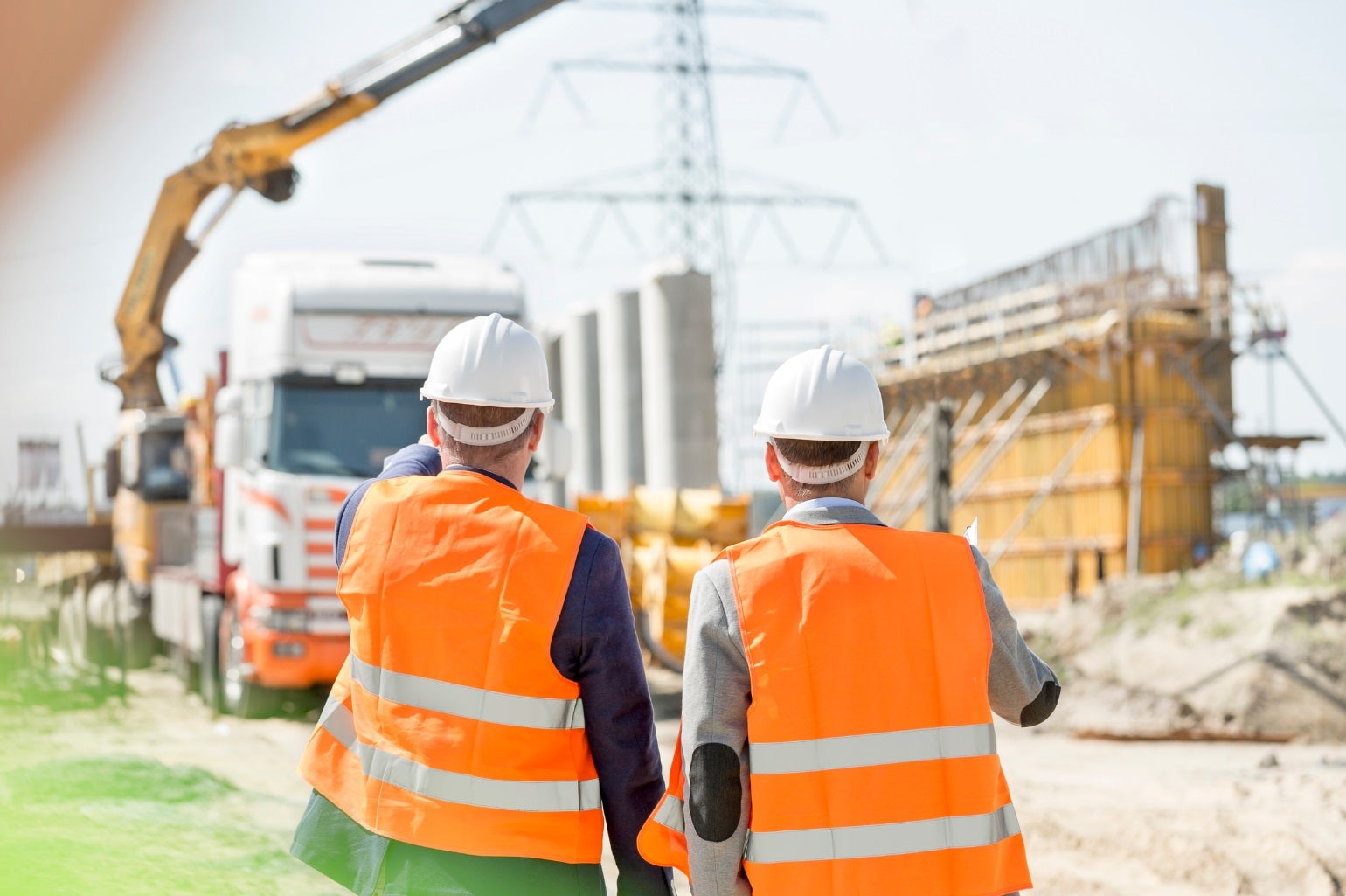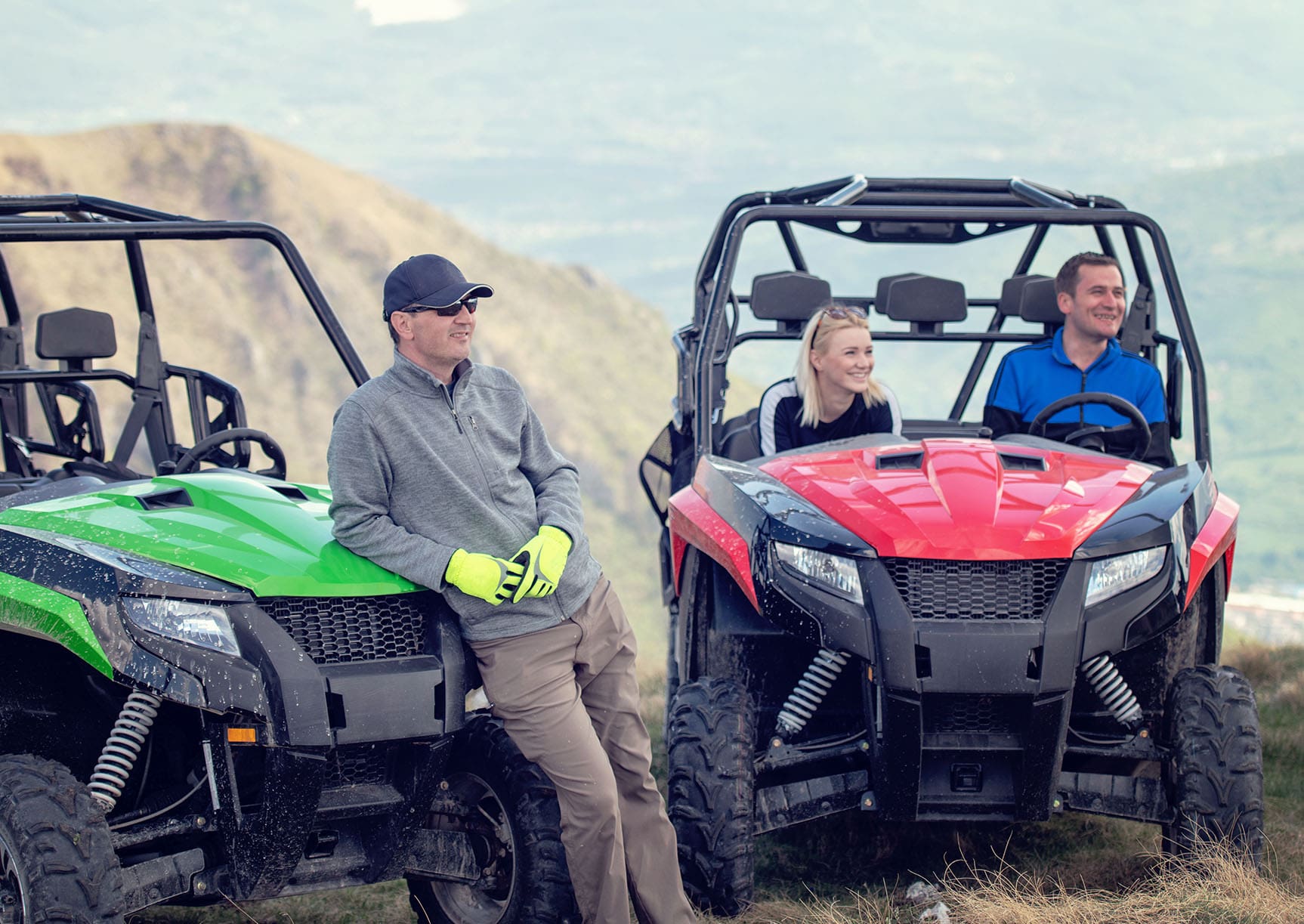Drive efficiency and reduce costs with proactive strategies
It’s not easy being a fleet manager today. Ninety percent of construction companies report work delays due to asset or vehicle theft, fifty-seven percent say accidents and near-misses are a major concern, and 40 percent cite vehicle maintenance and inaccurate data as pain points.
Yet despite these cost-driving trends, few construction leaders take steps to manage their fleets effectively. While it isn’t feasible to eliminate all risk from owning and operating fleets of vehicles needed for construction projects, it is reasonable to take action to help manage the potential for loss, as well as gain valuable opportunities to reduce costs, enhance operations, and become better positioned for success.
There’s an opportunity for contractors to create, and continually, refine a workplace culture that can help offset risk and result in positive impacts within their operations.
Frank Baxter – The Baldwin Group
Nine best practices to optimize fleet management
Whether your business maintains an entire fleet of heavy construction vehicles or a smaller inventory of light- or medium-duty trucks and vans, consider these fleet management best practices.
- Get a handle on costs.
Understand all expenses associated with managing your cars, trucks, and construction vehicles, including, but not limited to, the costs for:- Fuel
- Maintenance and repairs
- Permits, licensing, taxes, and registrations
- Insurance premiums
- Driver safety programs and employee training
- Technology systems
- External consulting fees
IT solutions can help streamline these time-consuming tasks and reduce costs to balance necessary project expenditures.
- Keep vehicles in good shape.
Regular vehicle maintenance is essential for keeping your operation running smoothly and safely and helping protect your investment over the long term. Faulty brakes, worn tires, and defective steering equipment are among the top reasons breakdowns and accidents occur with different types of construction vehicles.
Pay attention to sensors in vehicles, schedule regular maintenance, and keep tabs on when to replace and retire those vehicles. This can help avoid unforeseen downtime, lower expenses, and decrease unsafe conditions while on the road or at a job site. - Hire and train safe drivers.
Although accidents can happen for many reasons, most are the result of human error. Have a safety-minded strategy that trains drivers before they get behind the wheel of one of your vehicles.- Establish a driver screening process. Set and adhere to strict criteria that focuses on drivers with safe-driving records, education, and clean Motor Vehicle Reports (MVRs). Also consider extending policies to employees who use their personal vehicles for business uses. Most contractors are checking MVRs annually, but the best practice is to use a service that will continuously check the status of a worker’s MVR.
- Conduct proper driver training. Establish regular trainings to familiarize drivers with fleet vehicles, procedures, defensive driving, and to maintain skills or address inadequate performance. When there is an infraction to your policy, use training to re-educate and re-enforce your polices.
- Communicate policies. Beyond explaining rules, communicate expectations for driving behavior, impacts of insurance costs, and the importance of employee cooperation for successful operation. Utilizing telematics can provide crucial insights into driver behaviors, which can consequently improve the understanding of your policies among your drivers. If the data indicates non-compliance, it becomes your responsibility to respond appropriately. In cases where compliance issues are evident, establishing a consistent response pattern, such as disciplinary actions, coaching, or retraining, provides a robust foundation for your defense. However, a weak or non-existent response pattern could significantly undermine your defense argument.
- Comply with federal and state regulations. Laws are different state to state, and can change, so make sure traffic safety guidance is reviewed and updated on a regular basis.
- Engage drivers in safety
Every year, on-the-job driving accidents cost employers billions of dollars and damage company reputations. So, it’s critical to stay connected to drivers and continually monitor and engage them in safe driving habits.- Reinforce safe behaviors during foreman’s meetings, in emails, within group texts and other forms of communication. While it’s easy to focus on drivers who have been involved in an accident or received a speeding ticket, and that information must be tracked, it’s equally important to recognize drivers who have driven a certain number of miles without an accident or infraction.
- Establish and enforce a point system for drivers. Assign points for each infraction, with minor incidents prompting retraining or coaching, and severe ones leading to driving suspensions. This consistent, fair system helps effectively manage driver safety from your best to your worst performers.
- Reinforce positive driving behaviors with programs and incentives. Using telematics data scores, recognize top drivers every month with meaningful rewards or incentives, like gift cards, special awards, or personal acknowledgment from company leadership for embracing safe-driving habits.
- Remind drivers about disciplinary procedures. For violations, such as excessive speeding, repeated tickets and citations by mail, rolling through stop signs, distracted driving, and frequent accidents, emphasize how repercussions will be elevated from a verbal warning to suspension or termination of employment for repeated infractions.
Today construction leaders have a wide array of high- and low-tech tools in their toolkit to monitor and engage drivers in safe driving, from setting telematics alerts for excessive speeding and reviewing cell phone records for possible distracted driving to adhering safe-driving reminder stickers on dashboards and placing flyers inside vehicles.
Frank Baxter – The Baldwin Group
- Form a response for low-impact accidents.
Minor incidents can turn into large losses based on the high cost of inflation, medical care, and vehicle parts. You can help prevent minor damage from getting worse and costing more by considering the following as part of your risk management plan.- Counsel drivers to report minor incidents immediately. Make it a priority to document fender-benders and mishaps with photos, witness statements, and videos. Then, investigate.
- Keep a standard packet of information in the glove box of all vehicles in your fleet. Include what drivers will need to get through an accident, such as insurance information, a blank auto incident report to record details, instructions about who to contact, what to document, which photos to take, and how to contact witnesses.
- Take advantage of innovative tools and experts. Event data recorders, dash cameras, and evenbiomechanics engineers can help prove what happened, identify fault, measure the severity, force, and direction of impact, get citations reduced or removed, and help settle insurance claims.
- Coordinate schedules and optimize routes.
With numerous job sites and projects, coordinating schedules and optimizing routes can help prevent challenges, delays, wasted resources, and increased costs.- Adopt a holistic construction logistics strategy that can coordinate all processes involved in moving resources, equipment, vehicles, materials, and crews to job sites.
- Leverage technology to help analyze road conditions, track shortest routes, and map out the most efficient directions to job sites.
- Minimize reliance on paper-based workflows that are prone to mistakes.
- Automate manual processes to eliminate operational silos and inefficiencies.
- Consider telematics.
By gathering data, including vehicle location, driver behavior, engine diagnostics, fuel consumption, and vehicle activity, telematics can integrate a wealth of information into your operations stack to help improve efficiency, safety, and costs. Educate drivers about why you’re using it, how long you’ll keep data, what you’ll use the data for, and how the system improves outcomes. Specifically, explain how you use:- Customizable alerts to monitor events such as, speeding over 20 mph, repetitive patterns with hard braking, acceleration, and hard cornering.
- Audible alerts that will notify driver when a set threshold is crossed like exceeding 80 mph, or not wearing a seat belt.
- Dashboards to access data to optimize maintenance and manage driver alerts.
- Driver scores tallied from data collected and execution of safe driving to adjust policies or take action when set parameters are violated.
- Go green.
Looking for ways to run a more sustainable fleet is becoming more critical. In a recent industry survey, 42 percent of fleet professionals think customers will demand more fleet sustainability initiatives over the next few years to engage in business. More eco-friendly business strategies can help lower the impact vehicles have on the environment and enhance your business reputation to align closer with customer preferences. - Review insurance coverage with your advisor.
Since construction vehicles often operate in high-risk environments, comprehensive fleet insurance can provide coverage for various risks, including accidents, theft, vandalism, and natural disasters. With the high value of construction vehicles, even a single incident can result in financial loss. Work with your advisor to put the proper coverage in place to best protect your business. Ensure your policy covers the cost to repair or replace vehicles in the event of an incident, as this may minimize downtime and allow your projects to stay on schedule. And be sure it includes liability stemming from accidents. Protecting your business from the monetary burden of legal claims and settlements helps preserve your company’s reputation and financial stability.

Insurance is an indispensable tool for fleet managers in the construction industry. It provides financial protection, mitigates risks, supports the overall efficiency and safety of your operations, and creates a greater opportunity to focus on completing projects successfully.
Reach your goals with expert help
Of course, these are just a few best practices construction leaders can leverage to manage vehicle fleets. Ultimately, truly effective fleet management requires a multi-tiered approach and comprehensive strategy to optimize outcomes and success.
We’re ready to help when you are. Get in touch and one of our experienced Baldwin advisors will reach out to have a conversation about your business or individual needs and goals, then make a plan to map your path to the possible.
For more information
We’re ready to help when you are. Get in touch and one of our experienced Baldwin advisors will reach out to have a conversation about your business or individual needs and goals, then make a plan to map your path to the possible.
This document is intended for general information purposes only and should not be construed as advice or opinions on any specific facts or circumstances. The content of this document is made available on an “as is” basis, without warranty of any kind. The Baldwin Insurance Group Holdings, LLC (“The Baldwin Group”), its affiliates, and subsidiaries do not guarantee that this information is, or can be relied on for, compliance with any law or regulation, assurance against preventable losses, or freedom from legal liability. This publication is not intended to be legal, underwriting, or any other type of professional advice. The Baldwin Group does not guarantee any particular outcome and makes no commitment to update any information herein or remove any items that are no longer accurate or complete. Furthermore, The Baldwin Group does not assume any liability to any person or organization for loss or damage caused by or resulting from any reliance placed on that content. Persons requiring advice should always consult an independent adviser.






